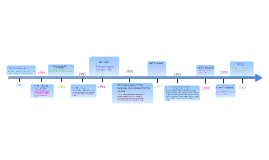


Poland and Germany sign a declaration of non-aggression, but the Third Reich, ruled by Adolf Hitler's National Socialists, does not hide its willingness to revise the terms of the Treaty of Versailles, and prepares to pursue the policy of expansion. Poland signs a non-aggression pact with the Soviet Union. The power is taken by a new political camp called ‘’Sanacja’’, which will rule the country until 1939.

The so-called Piłsudski’s May coup d’état and the subsequent amendments to the constitution strengthen the executive branch. Second Polish Republicįrance, Great Britain, Italy and Belgium sign the Locarno Treaties with Germany Poland’s neighbour accepts the shape of its western borders, though not the eastern one with Poland, which signals the intention to revise it. Germany and the Soviet Union sign an agreement in Rapallo to normalise their diplomatic relations and establish close economic cooperation, which, in a dozen or so years, will translate into rapid develoment of their military potential, and, in turn, enable them to pursue a policy of expansion. The port will be opened in two years, and within a decade it will become the largest and most modern transshipment port on the Baltic Sea. Poland gains access to the Baltic Sea, but not to the Port of Gdańsk, which results in the Sejm’s adoption of the law authorizing the government to build a port in the village of Gdynia. The Polish Sejm passes the March Constitution, introducing the dominant position of the parliament versus the executive power. The Treaty of Riga establishes the shape of the Polish-Bolshevik border. It is there that the Battle of Warsaw takes place, in which, thanks to the Józef Piłsudski’s bold maneuver, Polish troops defeat the Red Army. read more Second Polish Republic 1920Īfter the initial successes of the Polish Army, a new offensive launched by Bolshevik Russia forces the Poles to retreat as far as the Vistula River. The wars against the Czechs, Ukrainians and Bolshevik Russia will determine the shape of the southern and eastern borders. The young state fights for its borders: the uprisings in Greater Poland and Silesia give Poland the lands in the North and West, as confirmed by the Treaty of Versailles. read more Second Polish Republic 1919-1921 Austria and Germany are among the defeated, the Russian Tsar empire has collapsed. The 4-year-long First World War, during which Poland’s occupiers found themselves on opposite sides, ends. The Republic of Poland, partitioned by Russia, Prussia and Austria, does not exist as a state.


 0 kommentar(er)
0 kommentar(er)
